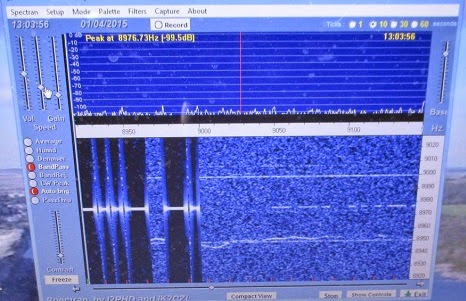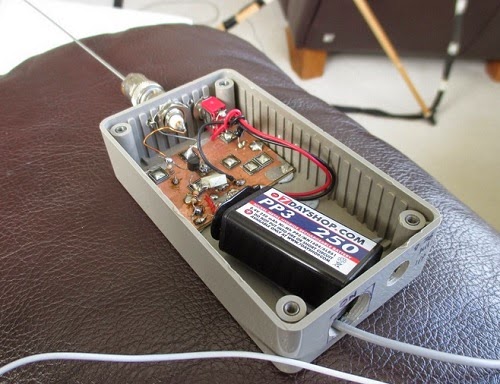Author Archive
 UK price drop – FT817ND
UK price drop – FT817ND
I see that Martin Lynch is now selling the FT817ND for £449.95 (including VAT) which I guess is reflecting the exchange rate against the yen? Years ago it sold for less than £350 with VAT. I think the dealers are still making healthy profits? Why is this like fuel? When prices go up we soon hear about it. When price or exchange rates massively improve the suppliers are generally slow to respond.
Supply and demand? People are prepared to buy at silly prices and dealers are happy to make good profits whilst they can. At one time a few years ago £1 would get you about 125 Yen. Today £1 gets you more like 175 Yen. Have prices followed? Of course not! Don’t be silly – just a bit cheaper!
It would be nice if they were clearing stock ready for a newer model. Sadly, I doubt this is the case.
 More news on South African 8m band (40MHz)
More news on South African 8m band (40MHz)
Read it first hand in: www.icasa.org.za/Portals/0/Regulations/Working%20Docmuents/Radio%20Frequency%20Spectrum%20Regulations/RFSR2015.pdf
In South Africa the latest radio regulations permit the use by radio amateurs of 26dBW (400W) on a 10kHz wide band 40.675 – 40.685MHz “for propagation studies only”. Now this is exactly what OFCOM should have done in the interest of real radio-science research. Personally I think a wider band would be better, but how far sighted to allocate this at all. Well done S.Africa.
OK, I could pay £50 for a special research permit, but this is exactly what radio amateurs need for real self training and radio-science research. The take-up might be small, but real research would take place.
OFCOM/RSGB – how about it please? You have just allocated 2MHz (2 chunks of 1MHz) of spectrum that will be used by just a handful mainly for DTV tests. How about a much smaller slice somewhere really useful in the radio spectrum? 40MHz is mid-way between 10m and 6m, so ideal for Es tests and TEP tests over the equator.
 FT991 Yaesu flagship "shack in a box"
FT991 Yaesu flagship "shack in a box"
 |
| http://www.hamradio.com/detail.cfm?pid=71-001812 |
The price here in the UK started out at £1279.95, (e.g. Martin Lynch and Waters and Stanton) which seemed high to me. The rig looks very attractive at the right price, but I think UK dealers are banking on “early adopters” who want a new radio at silly prices. Greed? Who said that? Surely not! Prices are a little cheaper in the USA but not sure of VAT and duty or guarantee. The usual guarantee from the big UK dealers on Yaesu products is 2 years, but it is wise to check. Also, further discounts may be offered if paying cash. I can wait and wait! £999 seems the right price, or even less.
The latest edition of Practical Wireless shows Haydon Communication now selling it at £1099.99. I assume this price includes VAT. I can see others matching or bettering this price when the “early adopters” have had their day.
The rig covers all modes 160m-70cms and includes a limited range internal ATU and a colour touch screen. It also supports Yaesu’s C4FM digital mode. Nice radio, at the right price. I expect the UK price will soon be £999. Wait.
 OFCOM again
OFCOM again
Please don’t misunderstand my views on OFCOM here in the UK. Generally, they have been supportive of the amateur community and I am grateful for this.
However, I am very critical that they seem loath to make real decisions about anything hard. Perhaps this is because they need real teeth and less government fiddling in the wings? I believe they need to be fully independent of government interference and be able to make common sense decisions without excuses. All the time they seem to hide behind the law as a safe-guard from doing anything very hard.
I have been critical of the FCC many times but in several ways they take a more pragmatic approach to spectrum management. All the time OFCOM employees seem to fear taking any hard decisions in case they break the law. Perhaps we need to employ people who actually understand radio and spectrum issues. Oh sorry, I forgot, these are a dying breed. We only have “yes boys” left.
 40MHz amateur band?
40MHz amateur band?
Well, I had a letter today from an amateur in South Africa who I hear have been allocated a small band at 40MHz. There are already a couple of EU beacons around 40MHz (OZ and G).
It would be so good if OFCOM here in the UK saw the real value in even a very small, shared band around 40MHz. Instead, we get given chunks (1MHz at 2m and 1MHz at 4m) which will hardly get touched by most. Surely a small 100kHz shared band at 40MHz that would really be of value to radio science has merit?
Of course, allocating ad interim chunks of unused spectrum to the amateur service is a “no-brainer” for dear old OFCOM. Fine doing this, but there would have been far better options, but these would have needed brain engagement, so out of the question? I hope that the RSGB and OFCOM talk some more and add new bits of spectrum soon.
 Four Metre Band and OFCOM rubbish decisions?
Four Metre Band and OFCOM rubbish decisions?
There was an announcement on the RSGB and OFCOM sites advising some UK full licence holders that 70.5 to 71.5MHz is being made available for one year by special permission for further digital experiments, a bit like 146-147MHz here in the UK.
Sorry, but has OFCOM gone stark raving mad???
I can see no good justification for this 1MHz of spectrum. 2m was already under-used and the 146-147MHz allocation is probably being used by a tiny handful of people from time to time only. DATV tests could quite as easily happen at 70cms.
I can think of far better parts of the spectrum OFCOM could have allocated e.g 100kHz around 40MHz (for Es propagation experiments), 73kHz, below 8.3kHz and a contiguous 5MHz allocation. Oh no, these require a brain to be engaged by OFCOM people.
Maybe this is an April fool’s wind-up, although I suspect it is true.
Surely if OFCOM wants to further real experimentation in radio science there are better ways of going about it? Yet again, I am totally unimpressed. Between OFCOM and the RSGB, I think this is, yet again, a stupid stupid decision. So we now have 2MHz of extra spectrum for 12 months that a very few might use. Big deal. OFCOM, engage brains, think radio science. If you want to help grow future engineers that we so badly need, these allocations will not help at all. Think again!
See http://www.rsgb.org/ .
See http://www.70mhz.org/ .
 First (restarted) VLF earth-mode test
First (restarted) VLF earth-mode test
 |
| 5W VLF beacon TX |
OK, I was only testing from the shack to the lounge, but this is a start. TX is 5W from my TDA2003 beacon.
TX frequency 8.976kHz initially with 10wpm CW, 300Hz bandwidth, sending my callsign and a dash. Nothing copied at first using a dummy load but over 70dB over noise using the earth-electrode “antenna” with no attempt to optimise match (fed via the same 3C90 step-up transformer used on 472kHz). With no probe at all (i.e.no RX antenna) the S/N was still some 40dB i.e. very good using the TX into the earth-electrodes.
 |
| QRSS3 signal received on Spectran (0.37Hz BW) |
Later with QRSS3, a 50 ohm TX dummy load, E-field probe at the RX, I got the signal at 10-20dB S/N. At the RX end I was using my simple E-field probe into a USB soundcard into my Windows 8.1 laptop.
 |
| E-field probe |
The blue photo shows the signal at the RX. The first part shows the TX signal on the earth-electrodes and the second part (weaker) was the signal on the EFP with the TX into a dummy load.
Honestly, this has really exhausted me!













